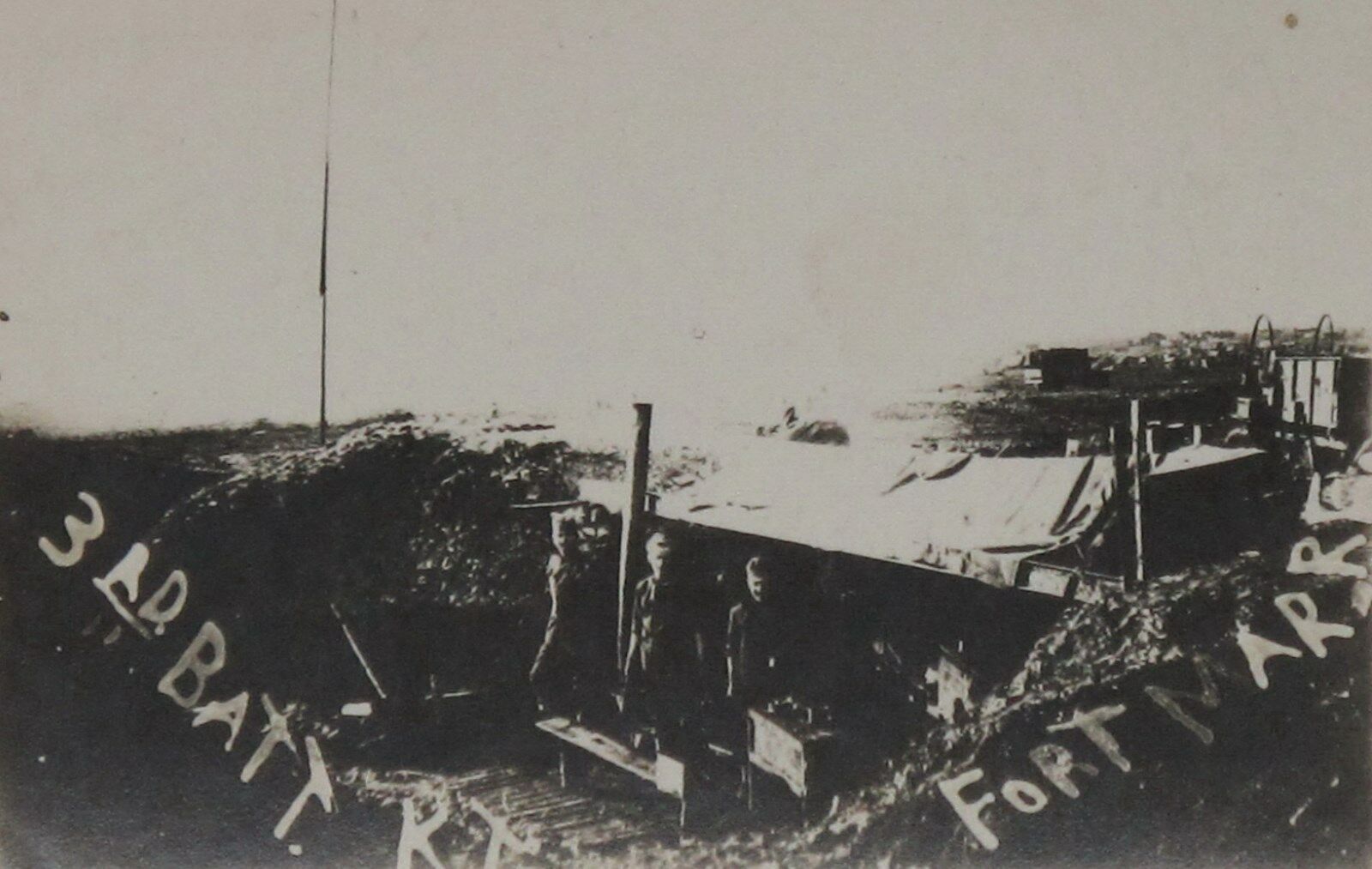-40%
1918 WWI Soldiers 3rd Battalion Anti Aircraft Guns Trench Camo France Photograph
$ 4.75
- Description
- Size Guide
Description
RIEGEL ARTS OFFERS THIS PHOTOGRAPH FOR YOUR CONSIDERATION:Item Number:
R713
Date/Era
:
Estimated 1918 - World War I
Size of image
:
3.25” x 2.25”
Please note the photo for sale in this listing is placed on the ruler starting at "1" inch and not "0"
Color:
Black & White
Any Flaws:
Age-related yellowing, small portion of left top of picture cut off, minor wear on corners and edges.
Content:
Three soldiers stand under a tent shelter in a trench near Fort Marre, near Verdun France. There is a stove and stove pipe and bench in the foreground. In the background we can see other equipment and vehicles. The handwriting on the photo it says 3rd Battalion right. Fort Marre. This picture is cut slightly at the top but does not impair enjoyment of the historic image. On the back the number 40 is written in pencil.
____________________________________
From our research we have determined that it is likely that these photographs (one of a larger group of photographs we have listed here in our eBay store), were taken during the soldier’s tour during the famous "St. Mihiel Offensive", fought September 12-16 1918
Brief History of WW1
28 July 1914 to 11 November 1918 - World War I (WWI or WW1), also known as the “First World War”, or the “Great War”, was a global war originating in Europe. More than 70 million military personnel, were mobilized in one of the largest wars in history.
Over nine million combatants and seven million civilians died as a result of the war (including the victims of a number of genocides), a casualty rate exacerbated by the belligerents' technological and industrial sophistication, and the tactical stalemate caused by grueling trench warfare. It was one of the deadliest conflicts in history, and paved the way for major political changes, including revolutions in many of the nations involved.
The war drew in all the world's economic great powers, assembled in two opposing alliances: the Allies (based on the Triple Entente of the Russian Empire, the French Third Republic, and the United Kingdom of Great Britain and Ireland) versus the Central Powers of Germany and Austria-Hungary. Although Italy was a member of the Triple Alliance alongside Germany and Austria-Hungary, it did not join the Central Powers, as Austria-Hungary had taken the offensive, against the terms of the alliance. These alliances were reorganized and expanded as more nations entered the war: Italy, Japan and the United States joined the Allies, while the Ottoman Empire and Bulgaria joined the Central Powers.
The assassination of Archduke Franz Ferdinand of Austria, heir to the throne of Austria-Hungary, by Yugoslav nationalist Gavrilo Princip in Sarajevo on 28 June 1914 was the trigger for the war. A diplomatic crisis ensued when Austria-Hungary delivered an ultimatum to the Kingdom of Serbia, as complicated international alliances formed over the previous decades were then invoked. Within weeks, the major powers were at war and the conflict soon spread around the world.
On 28 July, the Austro-Hungarians declared war on Serbia. Russia mobilized in support of Serbia, Germany invaded neutral Belgium and Luxembourg before moving towards France, and lead the United Kingdom to declare war on Germany. The German march on Paris was halted in what became known as the “Western Front” and quickly settled into a battle of attrition, with a trench line that changed little until 1917. On the “Eastern Front,” the Russian army was successful against the Austro-Hungarians, but the Germans stopped its invasion of East Prussia. In November 1914, the Ottoman Empire joined the Central Powers, opening fronts in the Caucasus, Mesopotamia and the Sinai. In 1915, Italy joined the Allies and Bulgaria joined the Central Powers; Romania joined the Allies in 1916, as did the United States in 1917.
The Russian government collapsed in March 1917, and a revolution in November followed by a further military defeat brought the Russians to terms with the Central Powers via the Treaty of Brest Litovsk, which granted the Germans a significant victory. After a stunning German offensive along the Western Front in the spring of 1918, the Allies rallied and drove back the Germans in a series of successful offensives. On 4 November 1918, the Austro-Hungarian empire agreed to an armistice, and Germany, which had its own trouble with revolutionaries, agreed to an armistice on 11 November 1918, ending the war in victory for the Allies.
+++++
Please take advantage of our
*Volume Purchase Discount*
In addition to our already-low sale prices, we offer the following additional "Volume" discount on most of our items.
It's easy to do:
On the 1st item, click "Add to Cart"
(Do not click "Buy It Now")
On the 2nd item, click "Add to Cart" to automatically get an additional
20%
off the total sale
On the 3rd item, click "Add to Cart" to automatically get an additional
25%
off
the total sale
On the 4th item, click "Add to Cart" to automatically get an additional
30%
off the total sale
Choose from any category of item and still receive a discount.
Please contact us over eBay messaging if you have any questions about our volume discount.
+++++












